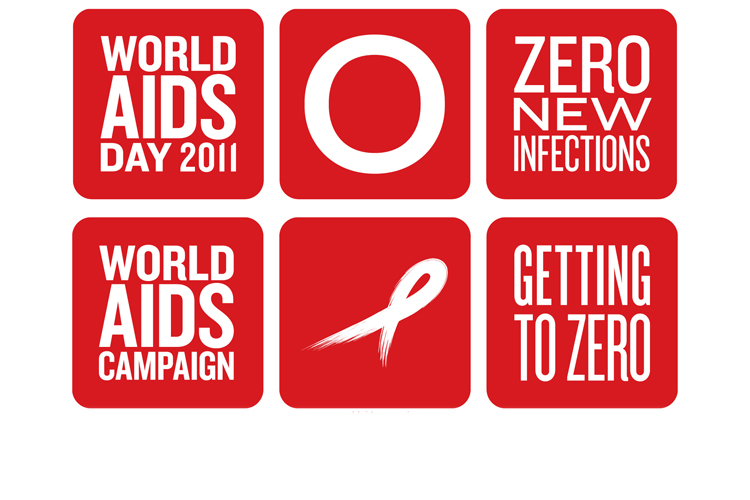
Today marks the 23rd World AIDS Day, an annual crusade led by the World AIDS Campaign to spread awareness and call for continued financial support of the global effort to ultimately eradicate the disease. Dr. Lisa Chirch, an infectious disease physician who joined the UConn Health Center earlier this year, discusses advances in treatment and management, and warns against complacency.
How far have we come since the first World AIDS Day in 1988?
A great deal has been discovered and accomplished in the field of HIV and AIDS over the past 23 years, on global, national, and local levels. The mid ’90s witnessed the release of the protease inhibitors, and the advent of highly active antiretroviral therapy (“HAART”). The availability and utilization of HAART has facilitated the management of patients infected with HIV, to the extent that many people are able to live close to normal life spans. However, widespread availability of drugs and access to care remain problematic both here in the U.S., as well as abroad, with sub-Saharan Africa continuing to bear the largest burden of the worldwide epidemic. New combination therapies, when available, taken correctly, and monitored closely by HIV providers, have the potential to control HIV infection, so that it becomes similar to other chronic illnesses, such as diabetes.
In 2006, the CDC recommended universal HIV testing for all persons age 13 to 65 as part of routine health care delivered in a variety of settings, such as primary care offices and emergency rooms. Although testing efforts have increased, with more cases identified and more patients linked to care, it is estimated that 1 out of 5 HIV-infected individuals are unaware of their infection, representing a dangerous reservoir for subsequent transmission and new infections. Too many patients are being diagnosed at late stages of infection, when treatment is much more complicated. The availability of rapid HIV tests that are performed in an office setting, with results available in less than one hour, have facilitated case identification across the U.S., but their application varies dramatically from state to state, and regionally.
What’s new in terms of treatment and research?
Agents in entirely new classes with novel mechanisms of action were approved by the FDA for use in 2007, adding the integrase inhibitors, and the CCR5 antagonists to our antiretroviral armamentarium. In combination with agents in the traditional classes (the protease inhibitors and nucleoside reverse transcriptase inhibitors), these new agents have been used in “salvage” regimens for patients who had developed otherwise resistant virus, allowing for adequate control of infection in patients who were otherwise failing treatment. Research is ongoing into utilization of newer agents in various treatment scenarios, such as naïve patients, and post-exposure prophylaxis (taking medications after a risky exposure, such as a needle stick or unprotected sexual encounter, to prevent infection). In addition, recent studies reported on the use of antiretroviral agents in HIV-negative patients who are at high risk for acquiring the infection, so-called “pre-exposure prophylaxis.” Oral antiretrovirals were shown to be effective in reducing the rate of new infection in high risk individuals, although results using vaginal microbicides (topical antiviral) have been mixed. The specific and practical applications of these findings have yet to be elucidated.
More is known about the biology of the “elite controllers,” patients who are able to control the infection in the absence of antiretroviral therapy. Investigators have identified specific host genetic factors associated with HIV control, and although research is ongoing, it may have future implications for the use of gene therapy. Although results from various HIV vaccine trials have been generally disappointing, in 2009 a trial sponsored in part by the National Institute of Allergy and Infectious Diseases was the first to demonstrate a vaccine’s ability to prevent infection in some study participants. Research on this and other vaccine candidates is ongoing.
Lastly, we learned in 2008 of the “Berlin patient,” an American infected with HIV who received a bone marrow transplant for leukemia from a donor who happened to be “resistant” to HIV infection by virtue of a rare genetic mutation. The Berlin patient has been free of HIV for the past 4 years, since his transplant, having received HIV-resistant cells from his donor. Although exciting, encouraging, and thought-provoking, the practical application of bone marrow transplant as a therapy for HIV is not feasible for obvious reasons. Bone marrow transplantation in itself is a complicated, risky, and expensive procedure. Furthermore, identifying HLA-matched donors who happen to have this rare genetic mutation, would be next to impossible. Nonetheless, the success of this patient furthered our understanding of HIV biology, and gave us hope for future therapies for HIV, including the use of immune therapies.
What are we seeing in Connecticut compared with other parts of the U.S. or the country as a whole?
As of December 2009, according to the Department of Public Health, there were over 10,000 people living with HIV/AIDS in Connecticut, a rate of 300 per 100,000 persons. Although certain minority groups such as African-Americans and Hispanics make up only 20 percent of the population in Connecticut, they represent 64 percent of the state’s HIV/AIDS cases. Large urban areas are also disproportionately affected by the epidemic, with half of the cases identified in Hartford, New Haven, and Bridgeport. The rates of newly identified infection have remained relatively stable in the U.S. as a whole for several years, with about 50,000 new cases yearly, and just over 1 million persons nationwide living with HIV/AIDS. Approximately 30 percent of new cases are diagnosed at late stages, meeting the criteria for AIDS. Although patients are living longer, and we are seeing larger numbers of elderly patients with HIV infection, new diagnoses among young men (in particular men who have sex with men) are particularly alarming. Gay, bisexual, and other men who have sex with men of all races and ethnicities remain the population most severely affected by HIV. Young, African-American men who have sex with men were the only risk group to experience statistically significant increases in new infections from 2006 to 2009, according to the CDC. Injection drug use and heterosexual sex are still important risk factors for HIV acquisition.
What is your observation of how public perception and awareness of HIV/AIDS has changed or evolved since we first learned about it?
Although there is clearly still social stigma associated with HIV/AIDS, the infection is now construed by many as more of a chronic condition, managed by lifelong medications, in some cases one pill once a day. Knowing that life-sustaining control of the infection is possible, albeit at great cost and, in some circumstances, limited availability, is enough to produce complacency in some people, to the extent that their lack of fear means they take fewer precautions against infection. Although this perception is generally correct, and HIV is a manageable condition, it is entirely misguided to accept the risk of infection and fail to take appropriate precautions. Living with HIV is far from simple or easy, it is a lifelong commitment that is not without consequences, even if well-managed. Therapies for HIV are not without side effects, many of which occur over years to decades. We are also seeing accelerated aging in many of our chronically infected patients, such as early cardiovascular disease, renal failure, malignancies, and cognitive decline. There is much to consider beyond “one pill once a day.”
The first World AIDS Day was 23 years ago … Where do you think we will be with HIV/AIDS in another 23 years?
My sincere hope is that we will have moved significantly closer, if not succeeded, in finding effective vaccine and/or immune therapies to control infection, and ideally, to prevent it. In the meantime, universal testing and case identification to bring infected patients into adequate care will be of the utmost importance, along with retention in care. Efforts by our public health officials at the state and national levels are ongoing. With over 33 million people infected worldwide, concerted global programs with adequate funding to increase access to state-of-the-art care and availability of effective antiretroviral therapy will be paramount to controlling the epidemic at large.
Follow the UConn Health Center on Facebook, Twitter and YouTube.



